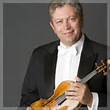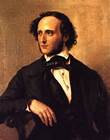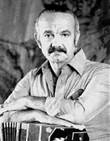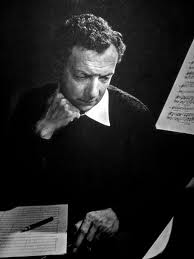 Part I: Music lovers in San Francisco had a festival of great violinists from late January to Groundhog’s Day. It was easy to forget the inevitable post-holiday let down when in the presence of artistry that lifted the spirit while demanding an open heart and mind. Alexander Barantschik, San Francisco Symphony’s Concertmaster, was leader and soloist on Jan. 22, 2014, when members of the SFSymphony joined him in works by Mozart, Mendelssohn, Britten, and Piazzola. With the exception of Piazzola’s works, each composer wrote the selections when very young. Very young: Mozart was 16 when he wrote Divertimento in F maj.; Mendelssohn was 13 when he wrote Concerto in D min. for Violin and String Orchestra; Britten was 10-13 when he wrote the themes, songs, and tunes which he made into Simple Symphony when he was 20. The words charming, delightful, beautiful are the ones which instantly come to mind for the Mozart Divertimento. The second movement Andante has a delicious lyrical, nearly seductive style. It ends with a Rondo which is bright and exciting. The players did so well capturing the light-on-water brilliance. Barantschik’s playing in the Mendelssohn Concerto had all the virtuosic abilities the piece deserves. He is an appropriate inheritor of the piece which was written for Eduard Rietz, the violinist to whom Mendelssohn dedicated important works and who was Concertmaster when Mendelssohn revived Bach’s Saint Matthew Passion. Before joining the SFS, Barantschik served as concertmaster of the London Symphony Orchestra. San Franciscans are fortunate to hear his performances with the orchestra and in chamber performances. The Concerto is full of energy and musical invention. Mendelssohn demonstrates his ability to see the many different dimensions in which the music can be arranged, altering the order of phrases and finding new combinations for them. Never more devoted to chess playing than to music making, the young genius gives us music that thrills the audience. Britten’s Simple Symphony was a surprise to audience members who know Britten only through “heavy” music like operas Turn of the Screw. This was fun and tuneful. The four movements, Boisterous Bourree, Playful Pizzicato, Sentimental Saraband, Frolicsome Finale, live up to their titles to create a frolicsome suite. The musicians played with relish. I first heard Piazzola’s music when a friend played tapes he had brought back from Argentina many years ago. It is tango, but it is more than “just tango,” and also shows how complex and rich tango can be. Barantschik was accompanied by soloist Seth Asarnow on bandoneon and the SFSymphony players. At the risk of robbing the music of its fascination, it’s worthwhile to assert that it is serious music. It is music that grew in a composer whose consciousness included jazz and Stravinsky (and Stravinsky was a composer whose consciousness had said hello to jazz as well). Tango is popular music which might prevent some music writers from taking it seriously; not this one. After all, the tango is famous, and infamous, for being about sex, a very mysterious and serious source of art.
Part I: Music lovers in San Francisco had a festival of great violinists from late January to Groundhog’s Day. It was easy to forget the inevitable post-holiday let down when in the presence of artistry that lifted the spirit while demanding an open heart and mind. Alexander Barantschik, San Francisco Symphony’s Concertmaster, was leader and soloist on Jan. 22, 2014, when members of the SFSymphony joined him in works by Mozart, Mendelssohn, Britten, and Piazzola. With the exception of Piazzola’s works, each composer wrote the selections when very young. Very young: Mozart was 16 when he wrote Divertimento in F maj.; Mendelssohn was 13 when he wrote Concerto in D min. for Violin and String Orchestra; Britten was 10-13 when he wrote the themes, songs, and tunes which he made into Simple Symphony when he was 20. The words charming, delightful, beautiful are the ones which instantly come to mind for the Mozart Divertimento. The second movement Andante has a delicious lyrical, nearly seductive style. It ends with a Rondo which is bright and exciting. The players did so well capturing the light-on-water brilliance. Barantschik’s playing in the Mendelssohn Concerto had all the virtuosic abilities the piece deserves. He is an appropriate inheritor of the piece which was written for Eduard Rietz, the violinist to whom Mendelssohn dedicated important works and who was Concertmaster when Mendelssohn revived Bach’s Saint Matthew Passion. Before joining the SFS, Barantschik served as concertmaster of the London Symphony Orchestra. San Franciscans are fortunate to hear his performances with the orchestra and in chamber performances. The Concerto is full of energy and musical invention. Mendelssohn demonstrates his ability to see the many different dimensions in which the music can be arranged, altering the order of phrases and finding new combinations for them. Never more devoted to chess playing than to music making, the young genius gives us music that thrills the audience. Britten’s Simple Symphony was a surprise to audience members who know Britten only through “heavy” music like operas Turn of the Screw. This was fun and tuneful. The four movements, Boisterous Bourree, Playful Pizzicato, Sentimental Saraband, Frolicsome Finale, live up to their titles to create a frolicsome suite. The musicians played with relish. I first heard Piazzola’s music when a friend played tapes he had brought back from Argentina many years ago. It is tango, but it is more than “just tango,” and also shows how complex and rich tango can be. Barantschik was accompanied by soloist Seth Asarnow on bandoneon and the SFSymphony players. At the risk of robbing the music of its fascination, it’s worthwhile to assert that it is serious music. It is music that grew in a composer whose consciousness included jazz and Stravinsky (and Stravinsky was a composer whose consciousness had said hello to jazz as well). Tango is popular music which might prevent some music writers from taking it seriously; not this one. After all, the tango is famous, and infamous, for being about sex, a very mysterious and serious source of art.
 pictures: top: a bandoneon; above, L to R: Alexander Barantschik, Felix Mendelssohn; below, Astor Piazzola, Benjamin Britten.
pictures: top: a bandoneon; above, L to R: Alexander Barantschik, Felix Mendelssohn; below, Astor Piazzola, Benjamin Britten.
